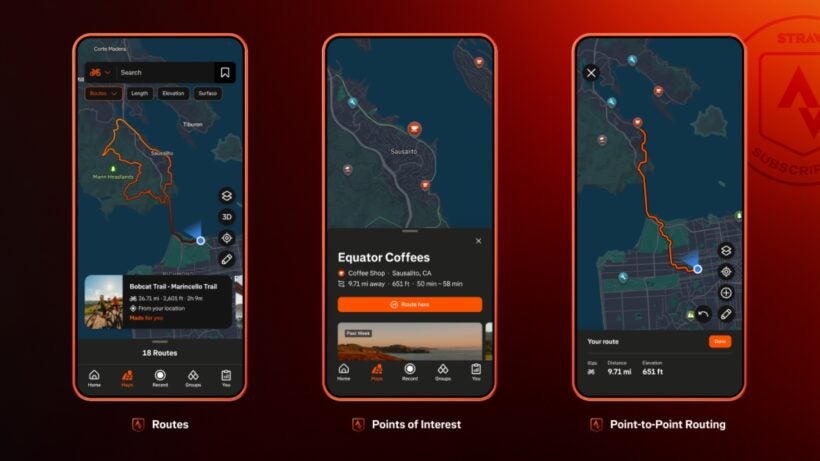Strava is polishing up features it first introduced last year, rolling out smarter AI-based route suggestions while doubling down on its effort to clean up cheating on leaderboards.
These updates, which will be exclusive to paid-up Strava subscribers, include a refreshed routing engine and stricter enforcement of its machine-learning-powered activity filtering.
The new routing tools build on existing Athlete Intelligence (Strava’s AI) implementation and its Global Heatmap tech, now offering more intuitive, community-backed suggestions for runners, cyclists, and walkers.
Users can generate routes from their current location or a custom starting point, providing more flexibility and integration with ‘points of interest’ (POIs).
POIs—like cafés, restrooms, or viewpoints—will become tappable in June, showing distance, elevation, and ETA, along with community-submitted photos. Then, in July, Strava will roll out point-to-point routing that delivers the most efficient route from A to B, customized for the activity type.

Live Segments are also expanding, with subscribers gaining access to twice as many globally popular segments and additional real-time performance screens.
But the bigger story might be what’s happening behind the scenes: Strava says its machine learning model has already removed 4.45 million illegitimate activities, including rides logged in vehicles or with mislabeled sport types.
The system continues to reprocess the top 10 leaderboard entries on run and ride segments to prevent fraudulent KOMs and QOMs, such as those performed by e-bikes instead of actual road bikes.
Despite the relatively lofty $11.99/month fee, there’s no doubt subscribers are getting fairly consistent new features and upgrades to the platform in Strava’s new era—including fewer reasons to doubt the leaderboard.




